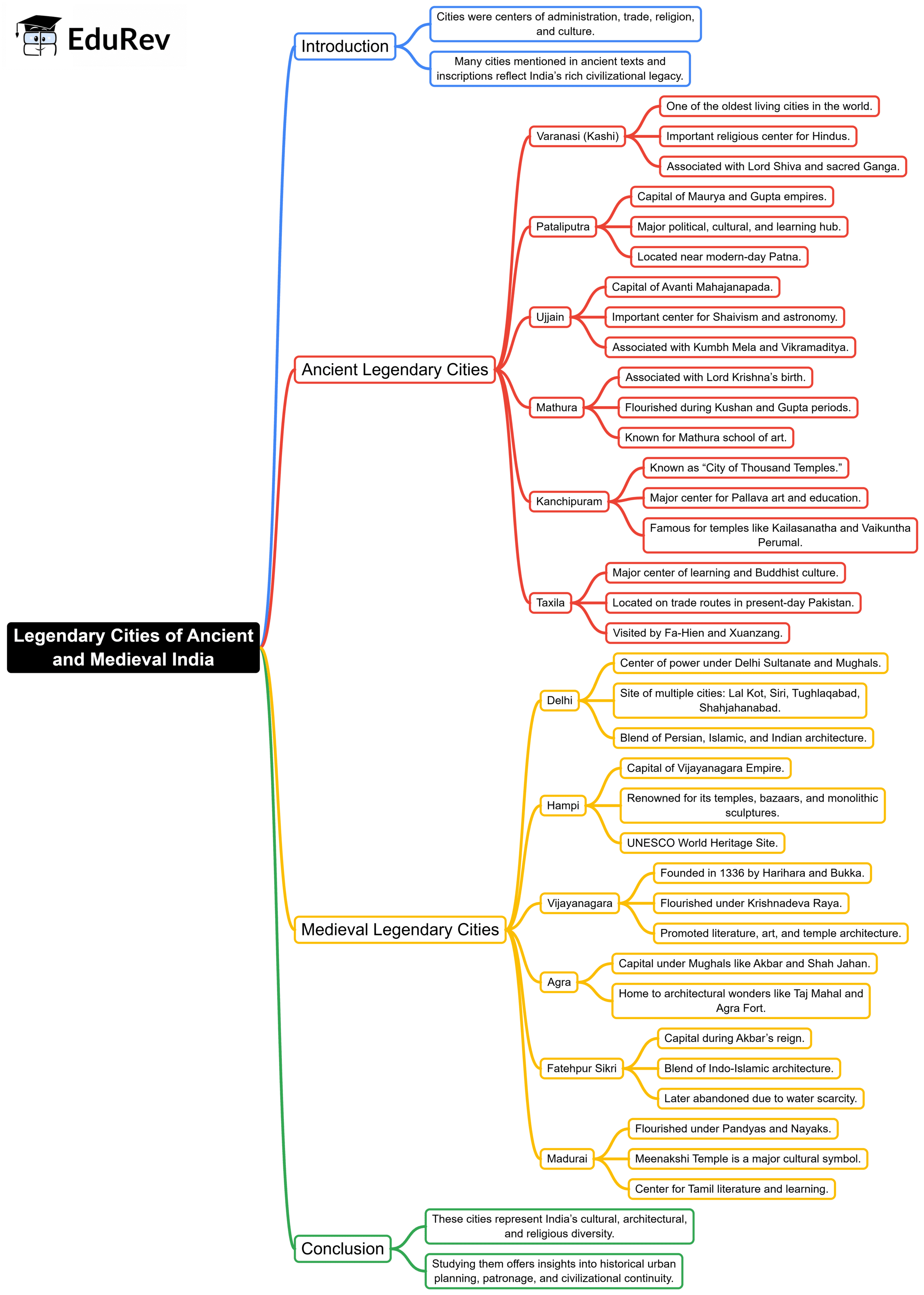UPSC Exam > UPSC Notes > History for UPSC CSE > Mind Map: Legendary Cities of Ancient and Medieval India
Mind Map: Legendary Cities of Ancient and Medieval India | History for UPSC CSE PDF Download

The document Mind Map: Legendary Cities of Ancient and Medieval India | History for UPSC CSE is a part of the UPSC Course History for UPSC CSE.
All you need of UPSC at this link: UPSC
|
216 videos|855 docs|219 tests
|
FAQs on Mind Map: Legendary Cities of Ancient and Medieval India - History for UPSC CSE
| 1. What are some of the legendary cities of ancient India, and what were their significance? |  |
Ans. Some legendary cities of ancient India include Varanasi, known for its spiritual significance and as a pilgrimage site; Pataliputra, which served as the capital of several ancient Indian empires; and Taxila, famous for its ancient university and trade routes. These cities were centers of culture, trade, and governance, contributing to the rich history and heritage of India.
| 2. How did medieval cities in India differ from ancient cities in terms of architecture and urban planning? |  |
Ans. Medieval cities in India, such as Delhi and Agra, showcased a blend of Indo-Islamic architecture, which included grand forts, palaces, and mosques, differing from the earlier ancient cities characterized by their brick and stone structures. Urban planning in medieval cities often featured structured layouts with markets, residential areas, and public buildings, reflecting the influence of various dynasties.
| 3. What role did trade play in the development of legendary cities in India? |  |
Ans. Trade played a crucial role in the development of legendary cities in India, as many cities were strategically located along trade routes. This facilitated the exchange of goods, culture, and ideas, leading to economic prosperity and the growth of urban centers. Cities like Surat and Calicut became vital ports for trade with the Middle East and Europe.
| 4. Which dynasties were instrumental in the establishment of prominent cities in medieval India? |  |
Ans. Several dynasties were instrumental in the establishment of prominent cities in medieval India, including the Mughals, who founded cities like Agra and Fatehpur Sikri, and the Delhi Sultanate, which established Delhi as a major urban center. The Vijayanagara Empire also contributed to the development of cities like Hampi, known for its architectural marvels.
| 5. How did the cultural aspects of legendary cities influence their development in ancient and medieval India? |  |
Ans. The cultural aspects of legendary cities greatly influenced their development, as these cities often became melting pots of diverse traditions, art forms, and languages. Festivals, religious practices, and scholarly activities flourished, attracting people from various regions. This cultural richness not only enhanced the cities' significance but also contributed to their historical legacy.
Related Searches
















